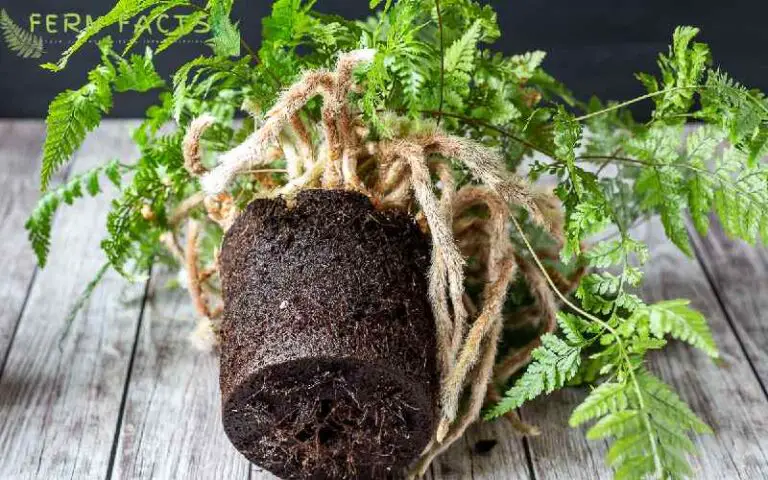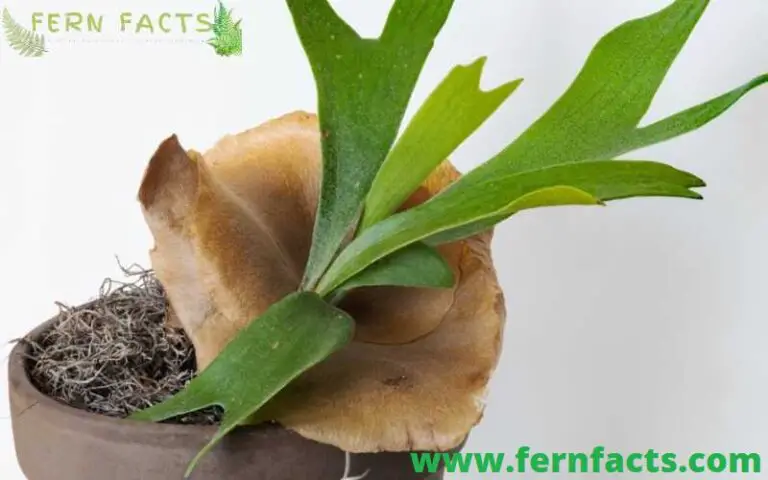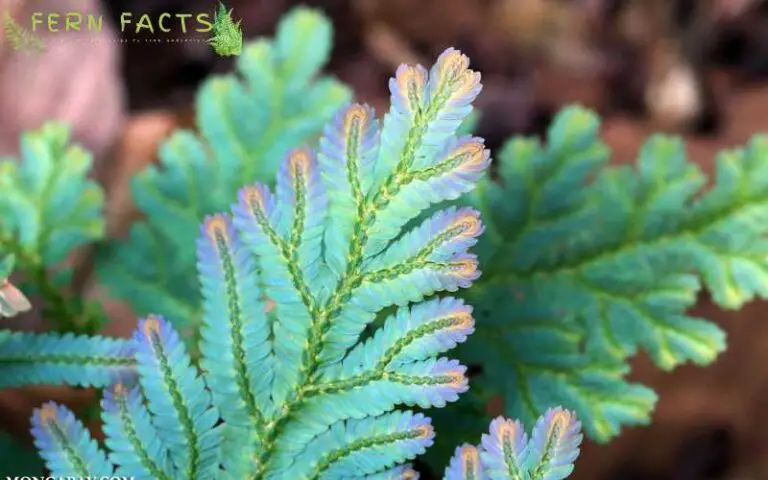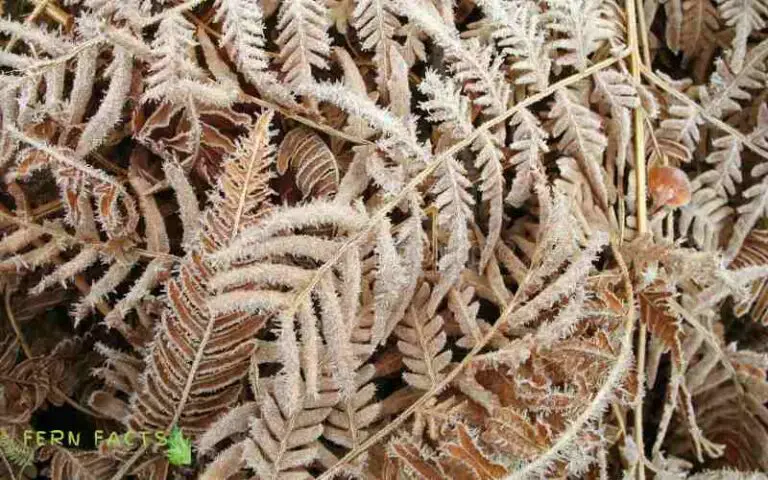Crispy Wave Fern Care and Troubleshooting
Ever heard about Crispy Wave Ferns? They are the most famous indoor plants because of their several outstanding characteristics.
If you want to grow these ferns at your house then follow this article from head to toe. In this article, I’ll share an overall idea regarding Crispy Wave ferns along with their characteristics.
Similarly, I’ll also talk about their growing tendency along with their common issues. Besides, I’ll also provide you with tips to troubleshoot those common problems so that you can have healthy thriving ferns at your house.
So let’s begin.
Overview of Crispy Wave Ferns
- Botanical name: Asplenium nidus ‘Crispy Wave’
- Plants: evergreen
- Native range: southeastern Asia, eastern Australia, Queensland
- Shade requirements: partial to full shade
- Height: around 1 m or 18 to 24 inches
- Soil: alkaline or neutral, moist and well drained
- Soil pH: 5.0- 5.5
- Temperature: around 70 to 90°F
- Hardiness zone: 9,10,11,12
- Toxicity: non-toxic
Crispy Wave ferns are evergreen ferns that have bright green-colored Crispy foliage. It’s basically a cultiver species of bird nest ferns; that’s why in many local regions it is referred to as bird’s nest ferns.
These crispy wave ferns are very popular for indoor and outdoor plants for any gardeners.
These crispy wave ferns can grow around 18 to 24 inches in size. However, they are pretty slow-growing ferns that’s why they might take a longer period of time to reach their maximum size.
They are non-flowering plants that grow spores like maximum fern varieties. However, they would also take several years to produce sori underneath their fronds.
Similarly, their fronds don’t contain any smells. That’s why they are also very popular indoor plants to grow because of their scentless characteristics. Similarly, these ferns also work as air purifiers in your house.
These plants are native to Queensland and Australia. Including these countries, these ferns are very common in southeastern Asia, Hawaii, India, and eastern Africa as well.
Originally, this fern was cultivated in Japan for the first time in 2010. Later that, these ferns gained several acknowledgments from the gardeners and plant enthusiasts.
Because of their long Wavy shape with bright green foliage, these ferns are a great addition to your house. Their bright green crispy fronds will intensify your house’s appearance.
As they are the evergreen plants, they will have fronds throughout all the seasons of the year and this will also not go under the dormancy stage.
These fern plants also require partial or fully shaded places with warm and humid places to flourish.
Having said that, these ferns are also not toxic to any animals or humans. Therefore, if you have pets or children in your house, you will not be too worried about them.
Growing Requirements of Crispy Wave Ferns
Now let’s go through some basic growing and caring requirements of these crispy wave ferns. So that you can easily grow these ferns at your house.
Shade Requirements
Like many other ferns, these crispy wave ferns thrive in dappled and filtered shaded places. This means they prefer partial to fully shaded places to bloom in your indoor place.
However, in native places, these ferns used to grow under tree canopies or under a big tree.
Although they can tolerate little exposure to the sun not for a longer time. Morning mild sunlight could be fine for them. But midday sun exposure can burn their fronds.
That’s why locate them in such a place where they can get dappled shade. For that reason, you can place your crispy wave ferns at any North or south-facing window where they can get indirect sun exposure.
Watering
These crispy wave ferns prefer moist and damp conditions. In their native habitats, they tend to inhabit rainforest areas. That’s why, It would be great for them if you could imitate that exact environment in your house.
That’s why you have to water them until the soil is moist to a sufficient level. Don’t make the soil too soggy; it can rot their roots. Normally, give water to this fern once per week.
Similarly, Don’t keep the soil too dry although they can tolerate drought but not for too long. Drought conditions might give your plants a dry crispy frond. Thus, water them on a scheduled basis.
Besides, in the winter seasons, you can reduce watering levels. You can pour water twice monthly during winter seasons. Also, don’t give too much cold water which can give mild shock to their roots.
Normal room temperature water or tap water is ideal for them. If you are unable to understand the watering level, use a thumb technique to check the soil’s condition.
This technique is more convenient to use if you’re a beginner-level planter.
Soil Requirements
Similarly, these crispy wave ferns need slightly acidic and neutral soil with a 5.00 pH level. The best soil for them would be if you could add peat, coconut coir, bark, perlite, charcoal, and worm casting.
Take all the proportions in an equal amount and prepare well-drained soil for your crispy wave ferns.
This rich humus acidic soil will enrich the soil’s nutrients and hold the moisture for a longer period of time. You can also buy a premade soil mixture from any nursery in your neighborhood.
In such cases, you can keep yourself hassle-free from mixing the soil in your house.
Temperature and Humidity
For native crispy wave ferns, their ideal temperature would be 18°C to 24°C or 60°F to 75°F. However, they can tolerate around 50°F. If the temperature drops below this level, they cannot survive.
Since their hardy zone is between 9 to 12, they enjoy a humid atmosphere. They prefer a minimum of 60 to 90% humidity in the environment. To increase humidity, buy a humidifier or use a pebble tray.
It will help to intensify the humidity level. However, you can also mist their fronds to hold back the moisture and hydration from their foliage.
Fertilizer
These ferns also need fertilizer during their growing seasons. But make sure you don’t over-fertilize your plant. Because it can give your ferns their roots by giving them salt burn.
In order to fertilize your crispy wave ferns, simply use a liquid fertilizer in the NPK ratio of 24:8:16. Simply dilute the fertilizer with half strength in water and use it during their growing seasons.
Avoid feeding in the winter season since their growth gets slower in that season.
Crispy Wave Ferns Maintenance Tips
While giving them their ideal condition, you also need to maintain these ferns; Otherwise, you cannot hold their elegant appearance.
In order to maintain these ferns, you need to do occasional pruning, repotting, and propagating. All these maintenance tips will enhance their growth to some extent.
Pruning
If you notice any brown or yellow fronds in your ferns, simply prune that part. It will intensify their growth by keeping them clean and tidy. If you also notice any dead or diseased fronds, then use a sterilized scissor to cut off those unhealthy fronds. Don’t trim any new growth foliage which can harm their growth cycle.
Repotting
If you see your plants get root-bound, then it’s a sign of repotting. However, you need to repot this fern once or every two years. Just take a bigger container from the previous one.
Prepare the new potting soil by following the previous guidelines I have guided you to do so.
Then take your crispy wave ferns and remove them from its pot. Remove the soil from the side and place it in the new container. Now fill the pot with the remaining soil and water your ferns thoroughly.
Propagation
If you want to propagate these ferns then you can use the spore collecting process. Although, they will take several years to become mature.
However, if you have a mature plant then you can easily use the spores process to propagate. Simply, take any white paper to collect the spores from underneath the fronds.
Keep the paper aside for a few minutes. Now prepare the potting soil for planting. Make sure you prepare rich humus soil with organic compost, perlite, peat moss, coconut coir, and worm casting.
Then fill the container half with your new soil mixture. Afterward, spread the spores on the surface of the new soil and slightly cover them with soil. Later water the soil surface or mist the surface level.
Try to keep the soil moist until you see any growth. Usually, it will take 4 to 5 weeks to grow. After a couple of weeks, you can see the new growth.
Later on, you can transfer new young shoots into a pot and follow the basic requirements.
Common Problems of Crispy Wave Ferns With Troubleshooting Tips
Although it’s a very renowned indoor plant, it’s still a very disease-prone plant. You need to take care of these ferns otherwise they’ll get infected by various diseases.
Pests Problems
These crispy wave ferns are very sensitive toward some pests like scales, aphids, spider mites, and mealybugs.
If you notice these pests in your plants then immediately isolate your plants from other plants. Or it can spread to your healthy plants. Now wash away your plants thoroughly so that pests or insects or any kind of bugs can wash away with rinsing.
Later, you can use any pesticides to prevent these problems. However, each pesticide has different applications, therefore read all the instructions before you apply it to your plants.
Alternatively, you can also use Horticultural oils. These are also another great solution to terminate those pests and insects. It really suffocates insects such as mealybugs, whiteflies, aphids, spider mites, and so on.
However, you can also use plant-based soil as neem oil to terminate those pests from the plants.
Rotten roots
Mostly this happens due to overwater. If you consistently water your plants without checking their soil’s condition, then their roots will be affected by fungus.
Ultimately, your plants will be dehydrated, and dull and will have yellow leaves. Thus, water your plants according to their needs and requirements; neither too much nor too less.
Blight
Blight is a fungal or bacterial disease that attacks the plant’s vascular systems and leads to the tissue of the plant’s death.
In these diseases, the fronds become yellow, wilted, and later root rot along with fungal infection, and seed-sized bumps on the plants.
It happens if the plants are not getting their ideal condition to live. Try to ensure their ideal condition so that they can thrive.
Closing lines
In short, Crispy Wave ferns are evergreen plants that are very frequent as indoor and outdoor plants. They are slow-growing indoor plants that take several years to mature.
You can easily grow these beautiful elegant ferns at your house by giving them their ideal conditions such as lighting, watering, humidity, soil, and temperature.
Similarly, you need to also maintain these ferns by pruning, repotting, and propagating in order to grow them actively. Further, by treating all their diseases and problems, you can give them a healthy thriving life.







